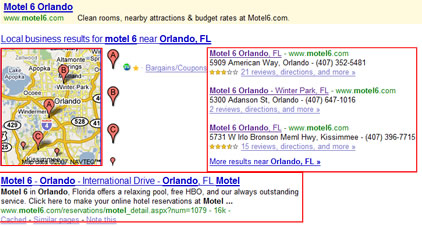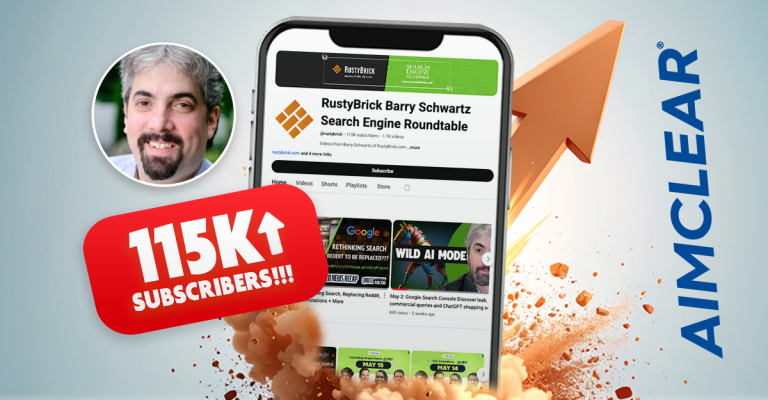The king is dead, long live the king. The old SEO is new again. This session, “Those Who Do…Tell: Effective Travel SEM Case Studies, “reinforced what we all know to be true: There are NO shortcuts.
Effective travel search marketing means researching and testing available channels with optimized content. Test some more, measure conversion with modern analytics, and don’t be afraid to try something else.
In case study after case study, each travel SEM guru explained measured programs of analytics, good ol’ fashioned optimized content pumped out many channels, (yes many) and a fanatical devotion to dotting the I’s and crossing the T’s. Essentially these travel ninja warriors USE universal search, verticals, major search engines, available paid-ad platforms, robust search engine optimization objectives, post search retargeting (OK that’s new) and an unflagging devotion to scaling ROI for the better as evidenced by actionable DATA.
Trent Blizzard, President, Blizzard Internet
Trent case-studied hotels (“bed products”) with an average of 500 unites each. Each was an east coast beach destination. The unique visitor to return visitor ratio was about 3:1. The bounce rate was 30-50 35%. There were 60,000 visitors on average and each property paid about $8.00 per unit marketing budget per month. The PPC budget was $7K to $8K. One site was active internationally and some dappled in mobile.
Direct Traffic (type the URL directly in the browser): The approximate traffic breakdown was 25% direct, PPC, 15%, SEO and quality links at 25% each. Direct type-in and bookmarks had the largest source of traffic, high conversion, high return visitor, low bounce rates and did not include high rate of search by-name (direct brand search).
SEO: Google was responsible for 65-70% of SEO traffic. Local search DOMINATED with long-tail accounting for 35% of search engine traffic.
Quality Links: Local websites about town, area or state, were top performers. Niche verticles like pet, wedding, and golf sites did especially well. These were labor intensive channels with lower conversion and a noticeable higher bounce.
PPC: The average was 15% of traffic and had the largest variation in traffic. The bounce rates were low and conversion rates high. The returns decreased over time at greater expense. Map/local/mobile showed the lowest CPC which is promising.
Email Marketing: accounted for only 1-2% of traffic with the lowest bounce rates and highest conversion rate
Social Internet and blogs accounted for some traffic and was strong for the purpose of reputation management. Yahoo Travel! GoogleLocal, CommunityWalk, and Craislist performed very well along with video/photo sharing sites like Flickr.
The Conclusion: Corporate commitment using blogs, email, quality link building, and PPC long-tail is a potent blend. Local /Maps are here to stay.. Mobile is not prevalent yet but the samplings are still relatively small.
Vic Dabricky, Account Director & Client Development, Range Online Media, Inc
Range Online focuses on brand terms, non-brand tail terms, non-brand head terms, and amenity terms (your differentiates), and locater-terms. This mix increased Motel 6 search revenue by 46% and served to raise non brand conversion keyword conversion rates.
Motel 6 realized a staggering 1366% in CTR, 300% decrease in acquisition cost as they broadened their “view.” Range takes good advantage of local maps, mobile feeds, classic SEO, re-messaging, widgets and mashups. Total revenue grew 92% with a 200% increase in search revenue contribution year over year. The increase in new customer revenue was 800%.
“Customers saw Motel 6 in more place and gave trust. The message was consistent whenever possible. Whenever you can piece all of this together it makes the PPC “so much more scalable.”
Begin with clear cut goals that can be accomplished across all channels. Improving the customer experience is always a goal. Establish common methods for tracking, reporting, and analytics across all channels. DATA always beats opinions. Don’t be afraid to adjust your strategy and goals as you learn more. Change them if you need to. Push your marketing team to innovate and push everyone to try new things out there. Otherwise you’re likely leaving money on the table.
Jens Thraenhart, Executive Director, Marketing Strategy and Customer Relationship Management, Canadian Tourism Commission
The optimization process starts with Identifying goals, conversion criteria, and KPI (key performance indicators). He begins by auditing the current status, resources, and organizational capabilities. “Create and overall strategy including milestones. Research, implement, and deploy.”
The analytics audit identifies existing conversions, unique and repeat visitors, time on site, referral sources, organic search, PPC, banners, and direct traffic. Take a look at traffic origins (country province, and known organizations (travel agencies). Design issue indicators should be examined included usability factors such as navigational abandonment. Don’t forget to audit technical infrastructure, media resources, and human resources.
Michael Winter, Media Director, Agency.com Ltd.
British airways launched their SEM campaign in 2003. They’re live in-market year-round and run about 12 different seasonal campaigns based on revenue and volume goals. Budgets have increased dramatically over the last couple of years. About 30% of overall spending is allocated to search which is a 42% increase from 2006. In case you’re wondering if it’s possible to market expensive luxury brands on the Internet-here’s your proof.
British Airways manages “keyword impact” by optimizing towards top converting keywords. The leverage individual campaigns by recognizing that tail-end terms also drive bookings although the conversions may be attributed to branded terms. Keep it relevant by ensuring copy is relevant to each keyword. Campaign efficiencies continue to rise. Q1 of 07 was 65% more efficient than 06. You CAN market a luxury campaign on the Internet.
The king is dead, long live the king. The old SEO is new again. There are few secrets, lots of hard work to do, and serious travel marketers need to dive deeply into traditional SEO values.









